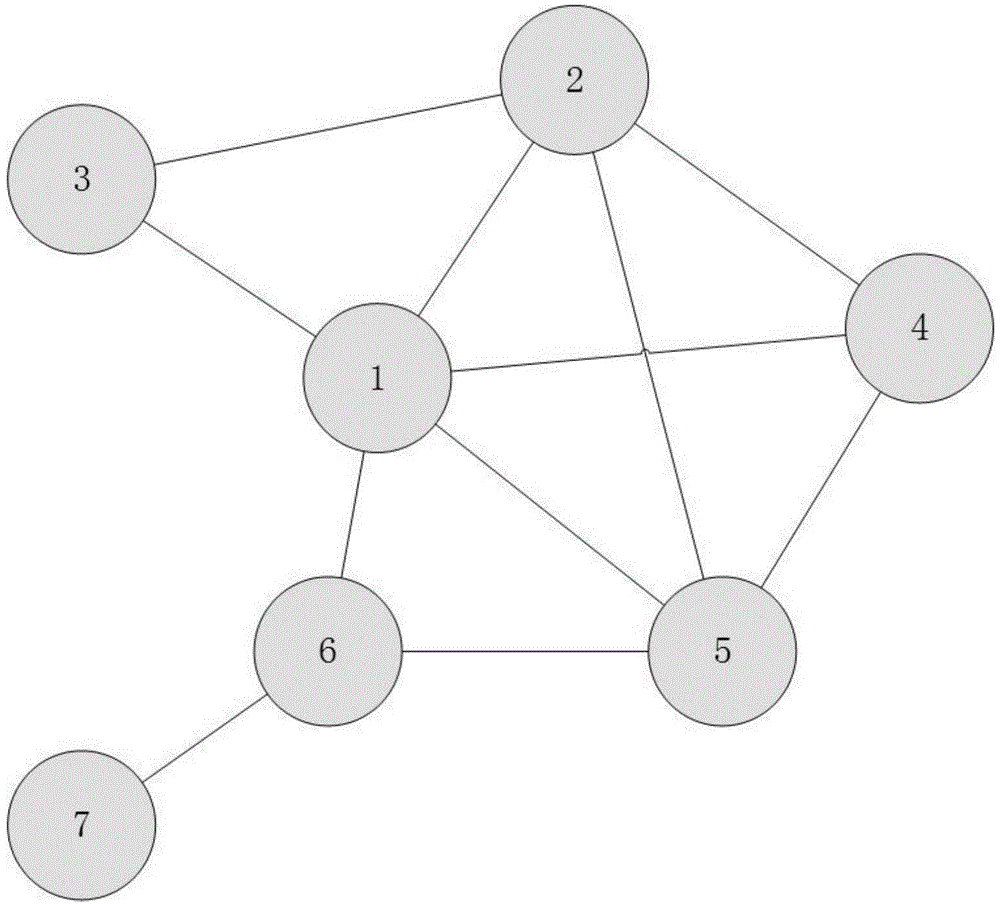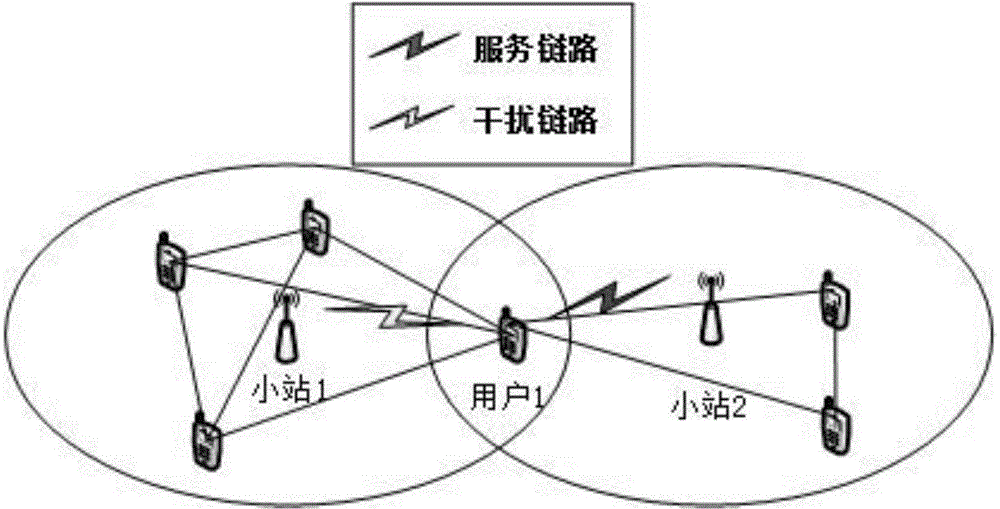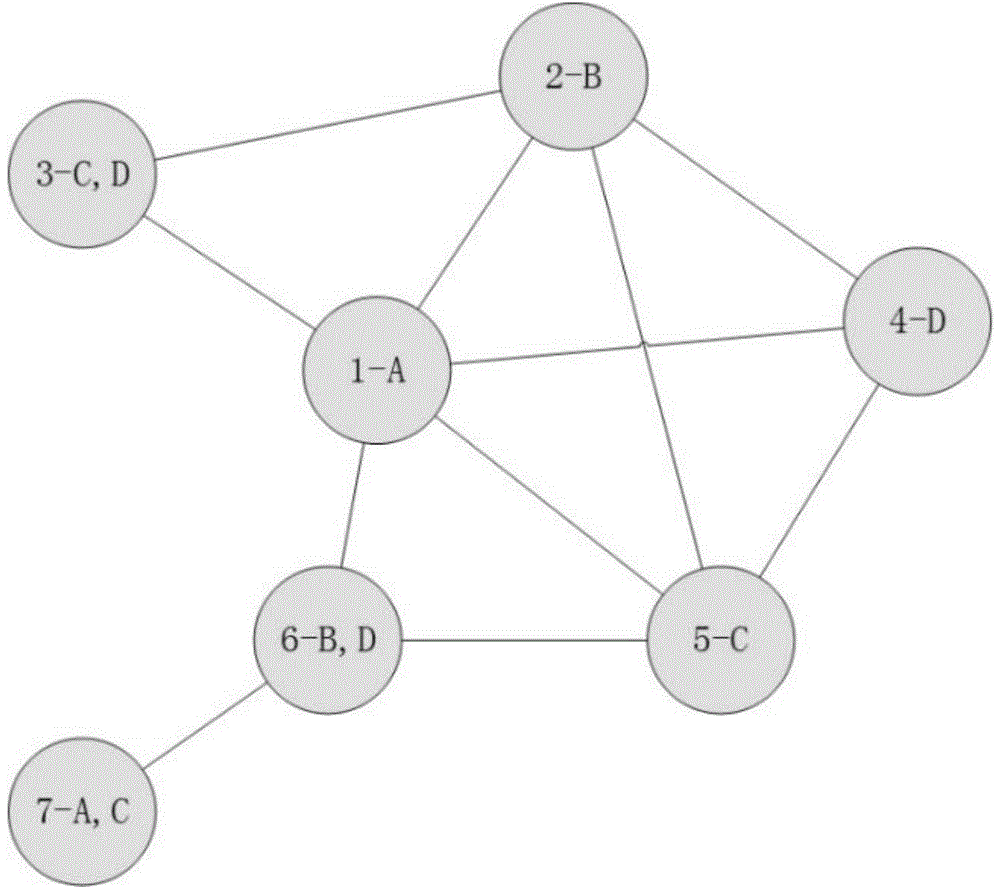Frequency domain resource distribution method based on graph coloring in ultra-dense network
An ultra-dense network and frequency-domain resource technology, applied in the field of heterogeneous network interference coordination, can solve the problems of not improving resource utilization, and achieve the goal of improving resource utilization, taking into account fairness, and improving the total throughput of the system Effect
- Summary
- Abstract
- Description
- Claims
- Application Information
AI Technical Summary
Problems solved by technology
Method used
Image
Examples
Embodiment Construction
[0045] The present invention will be further described below in conjunction with the accompanying drawings.
[0046] A frequency domain resource allocation method based on graph coloring in an ultra-dense network, characterized in that the method comprises the following steps:
[0047] 1) According to the received reference signal received power information, each user calculates the reference signal received power difference between every two adjacent small stations and the serving small station, and the threshold value R th Compare, determine the interfering small station, and report the test results of the interfering small station to the network side;
[0048] The threshold Rth is the difference threshold between the reference signal received power of the user's serving small cell and the reference signal received power of the interfering small cell;
[0049] 2) The network side constructs an interference relationship diagram between the test result information of the inte...
PUM
 Login to View More
Login to View More Abstract
Description
Claims
Application Information
 Login to View More
Login to View More - R&D
- Intellectual Property
- Life Sciences
- Materials
- Tech Scout
- Unparalleled Data Quality
- Higher Quality Content
- 60% Fewer Hallucinations
Browse by: Latest US Patents, China's latest patents, Technical Efficacy Thesaurus, Application Domain, Technology Topic, Popular Technical Reports.
© 2025 PatSnap. All rights reserved.Legal|Privacy policy|Modern Slavery Act Transparency Statement|Sitemap|About US| Contact US: help@patsnap.com



